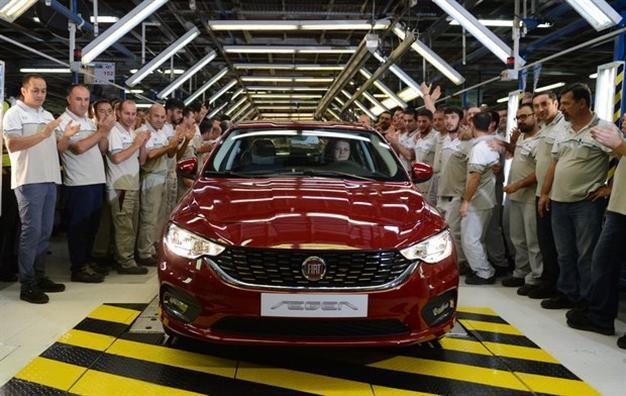New Fiat model’s production starts in Turkey
BURSA-Doğan News Agency

AA photo
Tofaş, a joint venture of Turkey’s Koç Holding and Italy’s Fiat Chrysler, has started producing a new Fiat sedan model, Fiat Egea, in the northwestern province of Bursa on Sept. 28 in a ceremony with Koç Holding Chairman Mustafa Koç, Fiat Chrysler Automobiles (FCA) CEO Sergio Marchionne and Tofaş employees in attendance.“We have made more than $1.5 billion investments in new models along with our partner Fiat Chrysler. A majority of these investments have been made on R&D activities and innovation, which are of great importance...The Egea project is the most solid example of our group’s approach in creating high added value and strengthening its competitiveness. Fiat Egea is produced in Turkey thanks to world class investments and capacities of Tofaş,” said Koç.
He noted that the project is “smart,” because it was developed to meet the demands of both domestic markets and foreign markets after much research.
“This model will be exported to more than 40 countries in Europe, Middle East and North Africa. In the same platform, we’ll also start the production of two new models, a hatchback and station wagon, for mainly export purposes,” Koç added.
The Egea project is composed of three new models, the first of which is a sedan model, now produced in Bursa. Tofaş plans to produce 1.2 million units of Egea sedans in the next seven years, according to company representatives. The project is named after the Aegean Sea in praise of the “sea of fellowship.”
This project has been a new turning point for Tofaş to use its 50 years of experience, said company CEO Cengiz Eroldu.
“Tofaş has been long prepared for this important point. Thanks to heavy R&D investments since the beginning of the 1990s, Tofaş has become the second largest R&D center of Fiat Chrysler in Europe,” he said.
A total of 2,000 Tofaş and Fiat Chrysler engineers took part in the project’s development process over three years, Eroldu noted.
“Dozens of prototypes were tested in several locations across the globe, from the Latin America to the Poles,” he said.
















